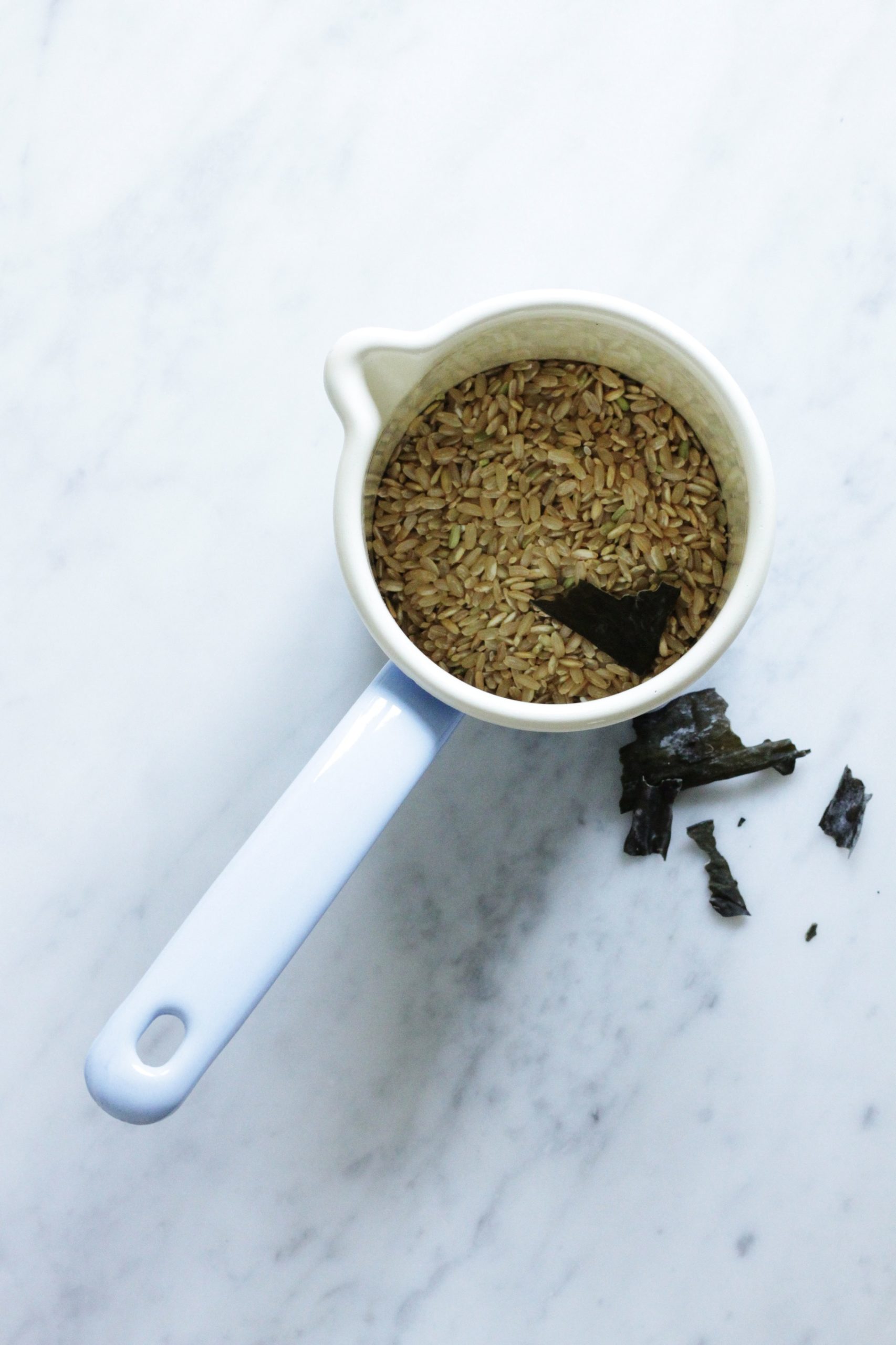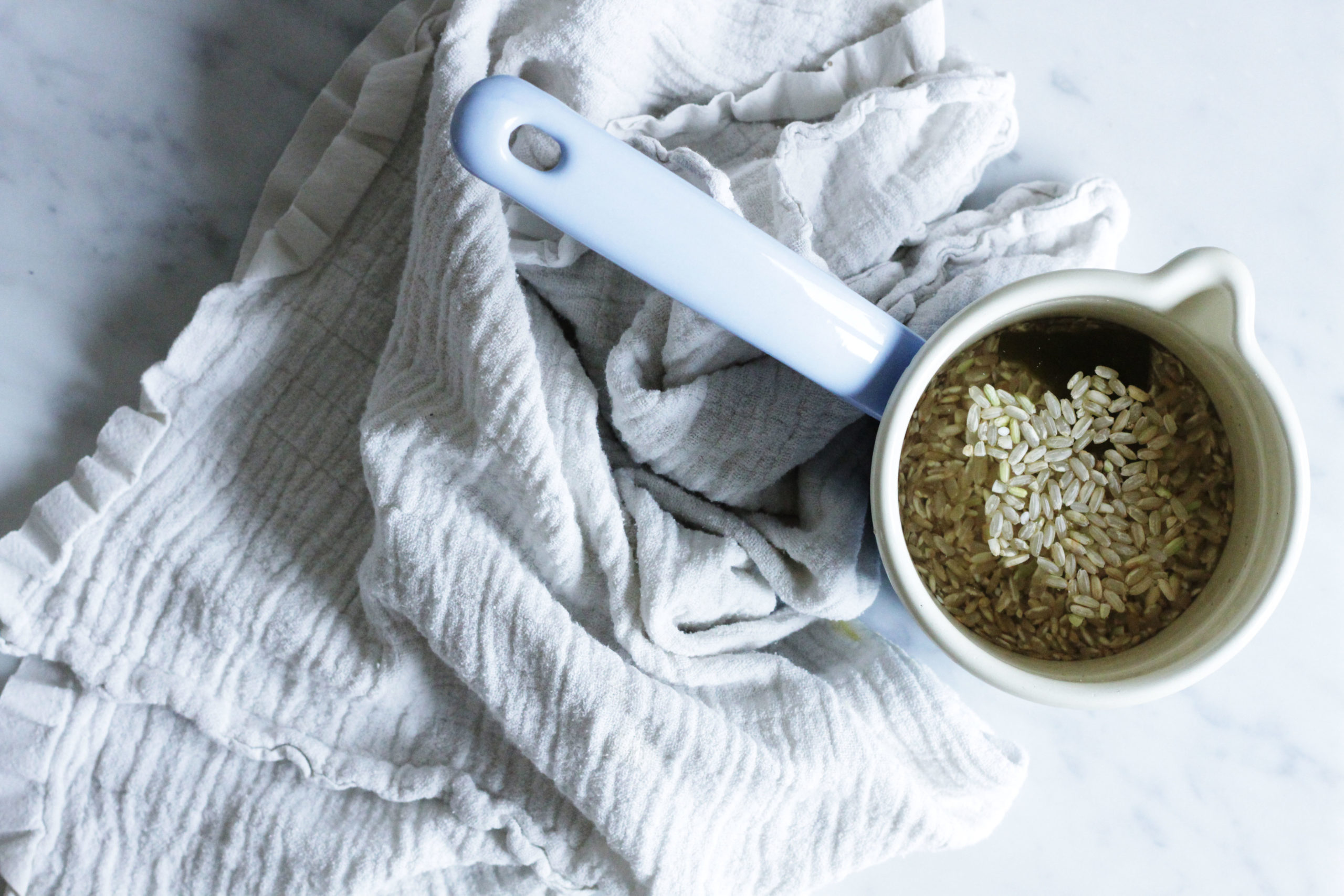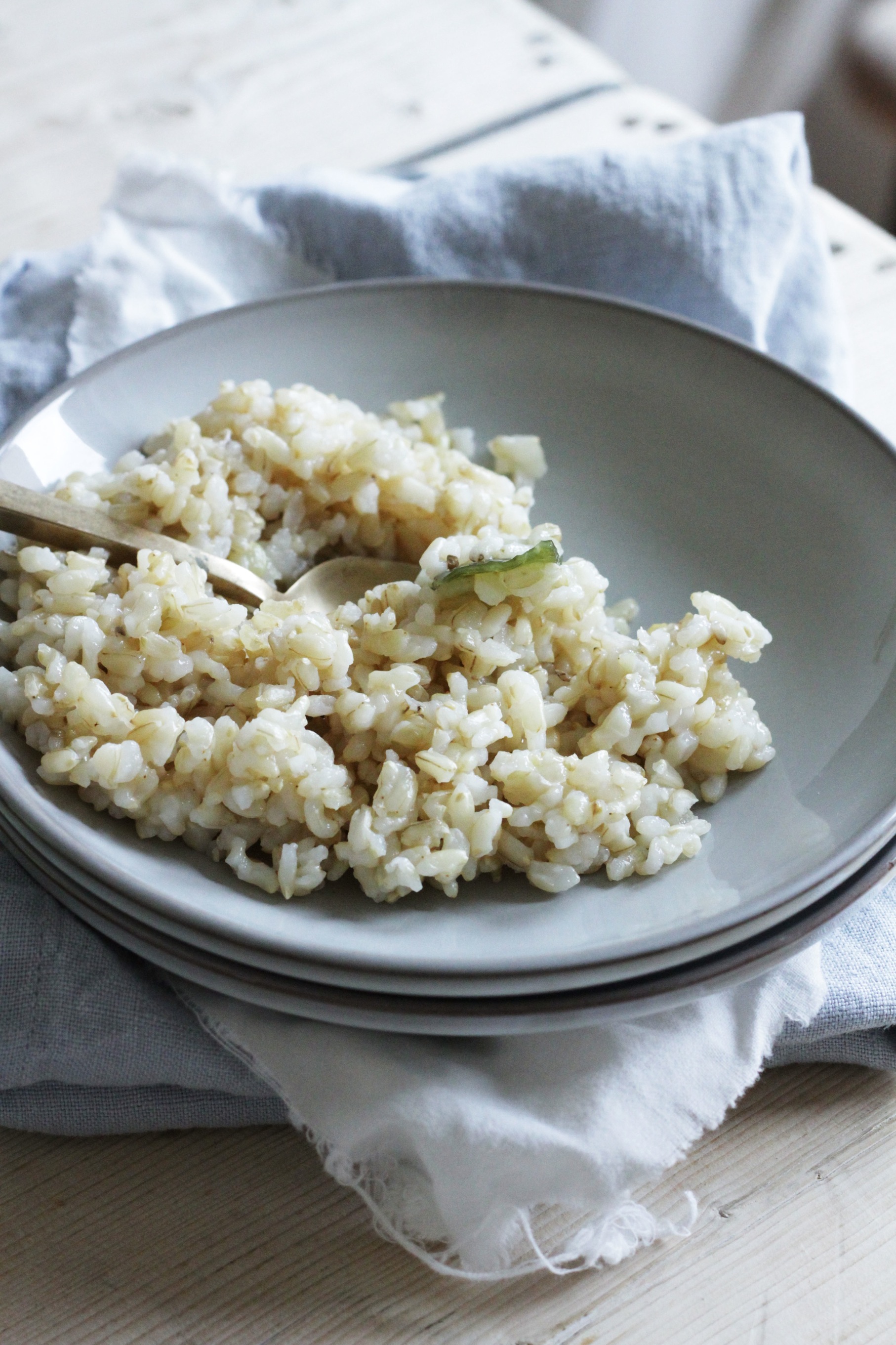According to the ancient lineage of eastern medicines whole grains are the most balancing of all foods, with brown rice considered the absolute queen. It has a neutral quality: not too light and not too heavy and acts as the perfect yin-yang energy equalizer.
Whenever you find yourself caught up in extremes (overactive, extremely fatigued, overemotional, totally closed-up, addicted, indifferent, constantly looking for the next kick, apathetic, etcetera) whole grains help you to come back to center, to a state of dynamic balance. They are known to balance our lives, thoughts, emotions, blood sugar and energy levels. When prepared well whole grains are absolute healers. When prepared in the quickest or most refined ways possible healthful whole grains can become potential problems. Grains (as well as nuts, seeds and beans) contain a substance named phytic acid. Phytic acid is essential to the plant: the plant uses it as an energy source to sprout and grow from seed to full-blown crop. When we eat meals that contain small amounts of phytic acid we are blessed with the special health benefits phytic acid gives us. It helps to modulate our blood sugar level, prevents us from forming kidney stones and helps to safely excrete heavy metals from our bodies. But phytic acid also has a downside: to us it acts as an anti-nutrient, matter that can rob our body from nutrients. Result? When we eat meals that contain large amounts of phytic acid, minerals are hijacked before they are absorbed and the digestion of starch, fat and protein reduces. This eventually leads to depletion and mal-nourishment.
Because plant eaters tend to eat more phytic acid rich produce such as grains, beans, nuts and seeds (and because our modern day cooking is nothing like the traditional food preparing methods that had a natural phytic acid decreasing effect) this problem is not just theory, it’s factual and real. Shall I show you how I live with phytic acid to get little 15 month old Lou, my whole family and myself fully nourished and happy as beans? You’ll find my practical tips below!
Happy cooking,
Xoxo kyra.

'Whenever you find yourself caught up in extremes whole grains help you to come back to center, to a state of dynamic balance.'

PRACTICALITIES
The amount of phytic acid is decreased by:
1.soaking
2.sprouting
3.fermenting
4.heating
In fact the best general method of decreasing phytic acid is by soaking the grain, bean, seed or nut for 8-24 hours in lukewarm water with a (phytic acid reducing) medium such as raw yoghurt, sea salt or rye flour. This will start the sprouting and fermenting process. You may, or may not, choose to sprout or ferment it further, this is optional. Then cook the grain or bean, or slow bake / dehydrate the nut or seed. This complete package will have the biggest phytic acid reducing effect. Just soaking and sprouting a grain, bean or nut before eating it raw will not have a sufficient reducing effect.
An example: whole spelt flour that has been left to naturally ferment with a (rye based) sourdough starter for 3 days or so, then baked as a bread, has almost no phytic acid left in it. This traditional food prepping process involved soaking, fermenting and baking. The magical healing trinity of natural food processing.
Now that you understand the basics and general idea of how to live with phytic acid it’s good to know that grains need a slightly different approach than beans or nuts to rid themselves from enough of this nutrient snatching matter. In this specific post I’ll share the technique and recipe for preparing brown rice. Brown rice is the curious one of the bunch. It requires a slightly different approach.
RECIPE & METHOD
The best method to reduce phytic acid in brown rice is to:
1.Soak it ( 2-3 tbsp for baby, up to 75 grams for adults) in filtered water for 24 hours
2.Then strain it and keep 10% of the old soaking water to the side to use for soaking the next batch
3.Cook your soaked rice in fresh filtered water, preferably with a stamp sized piece of kombu seaweed
4.Soak the second batch for, again, 24 hours in 10% old soaking water plus 90% fresh filtered water
5.Continue doing this. After ten batches of rice (ten times this routine) the amount of phytic acid reducing matter in the old soaking water will have increased so much your rice will be nearly phytic acid free.
I have made this method visual and understandable in my ‘healthiest rice’ cooking video.
TIP: If you’re not cooking rice everyday you may store the 10% old soaking water (you’ve kept aside after straining the 24 hours soaked rice) in a airtight container in the fridge until you make your next batch with it.
The above mentioned method only works for brown rice. I’ll plan a post on most practical and most efficient ways to soak all of the different grains, beans, seeds and nuts soon. To be continued!
special thanks: marble. LIJNS




Arlette
17.06.2015 at 12:07This workshop today at the beach is great. Thanks. You are a great example
X
Kyra
17.06.2015 at 16:42thanks so much dear arlette!
it was great having you ♡
happy evening! xoxo kyra
Jessica
08.03.2017 at 16:58dear kyra!
thank u for yr insight. i have a question regarding yr recipie:
you mention 2-3 tbs or 75grams for adults to add to the rice… 75grams of rye flour or joghurt or any of those? and it does not matter how much rice you add it to?
i look forward to yr clarification!
Carlie
28.05.2017 at 16:01Thank you Kyra,* * * I have a question, so after soaking you cook the rice, for how long? Reapting ten times, so also cooking ten times? Look forward to the soaking recipies for beans nuts and seeds. Super, warm wishes, nice summer xx Carlie